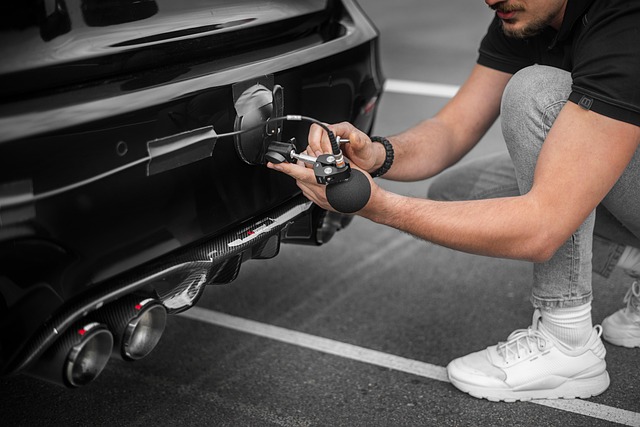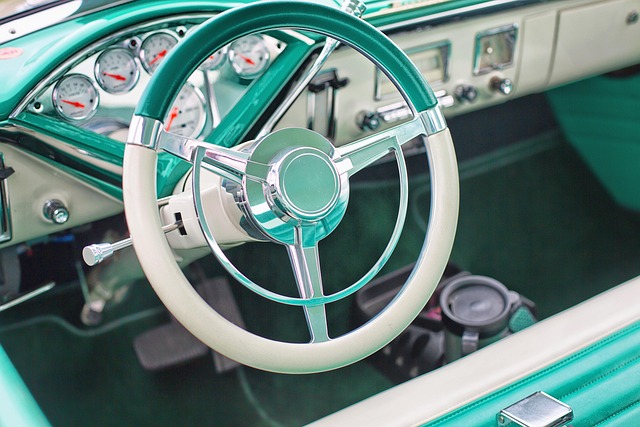Looking to register your car in California? This guide breaks down the process step-by-step, from understanding key requirements to securing your license plate. First, grasp the state’s car registration mandates, including necessary documents and VIN (Vehicle Identification Number) accuracy checks using a reliable VIN verifier. Next, select a convenient DMV service option. Finally, complete the registration, ensuring compliance with California laws through proper documentation and plate issuance.
- Understand California Car Registration Requirements
- Gather Necessary Documents for Registration
- Verify Vehicle Identification Number (VIN) Accuracy
- Choose a California Department of Motor Vehicles (DMV) Service Option
- Complete Car Registration Process and Obtain License Plate
Understand California Car Registration Requirements

Before registering your car in California, it’s crucial to understand the state’s specific requirements. One key aspect is ensuring your vehicle has a valid and accurate Vehicle Identification Number (VIN) verification. California requires a comprehensive inspection process that includes both a visual assessment and the use of a reliable VIN verifier. This step is essential to confirm the authenticity and history of your car, helping to prevent fraud and ensuring compliance with local laws.
A mobile VIN verifier can play a significant role in this process by offering a convenient and efficient solution. With this tool, you can conduct a thorough inspection right from the comfort of your location. Whether you’re a seasoned vehicle owner or just starting, understanding these requirements and utilizing available resources like mobile VIN inspections will streamline the registration process and ensure your car meets all necessary criteria for California roads.
Gather Necessary Documents for Registration

Before you begin the registration process, it’s crucial to gather all the essential documents required by the California Department of Motor Vehicles (DMV). One critical step is to obtain a Vehicle Identification Number (VIN) verification from a reliable source. Many individuals opt for a mobile VIN inspection or use a mobile VIN verifier to ensure accuracy and save time. This involves checking the VIN on the vehicle’s frame, engine, and other vital components to confirm its authenticity and history.
Among the documents you’ll need are the title (or proof of ownership), registration certificates from previous states (if applicable), proof of insurance, and a valid driver’s license. Additionally, the DMV may request a safety inspection certificate and emissions test results, depending on your vehicle’s age and model. Having these documents readily available will streamline the registration process and prevent potential delays at the DMV.
Verify Vehicle Identification Number (VIN) Accuracy

Before proceeding with the registration process, it’s crucial to ensure the accuracy of your vehicle’s Identification Number (VIN). A VIN is a unique code that identifies your car and is essential for legal purposes. You can verify its validity through various means, including a vin verifier. This service allows you to cross-check the VIN against official databases, ensuring it matches the manufacturer’s records.
Conducting a mobile vin inspection or using a reliable vin verification tool online or via phone is a straightforward process. It requires you to provide your VIN and receive confirmation of its authenticity. This step ensures that you’re registering a genuine vehicle, preventing potential issues later, such as fraud or identity theft.
Choose a California Department of Motor Vehicles (DMV) Service Option

When registering your car in California, the first step is to select a suitable service option from the California Department of Motor Vehicles (DMV). The DMV offers several ways to complete this process, each with its own benefits. One efficient method is to utilize a mobile vin verifier or mobile vin inspection service. These services bring the DMV to you, saving time and effort.
By opting for a mobile vin verification, you can have your vehicle’s VIN (Vehicle Identification Number) checked and validated without visiting a traditional DMV office. This option is particularly beneficial for those with busy schedules or who prefer a more convenient, hassle-free experience. It ensures that all necessary documents are in order before proceeding with registration, streamlining the overall process.
Complete Car Registration Process and Obtain License Plate

After ensuring your vehicle meets all necessary requirements for registration in California, such as passing a state-mandated safety inspection and emissions test (if applicable), it’s time to complete the car registration process. Gather essential documents like proof of insurance, owner’s identification, and any relevant paperwork from previous registrations. Visit a local Department of Motor Vehicles (DMV) office or utilize their online services to initiate the registration. During this stage, you’ll verify your Vehicle Identification Number (VIN) through a state-approved verifier, ensuring its authenticity and preventing fraud.
Upon approval, you can obtain license plates for your vehicle. For added convenience, many DMV locations offer mobile VIN verification services, allowing you to confirm your VIN’s validity from the comfort of your home or office using a smartphone app. This streamlined process ensures that only legitimate vehicles receive California license plates, enhancing road safety and security.
Registering a car in California involves understanding state requirements, gathering essential documents, ensuring your Vehicle Identification Number (VIN) is accurate using a reliable VIN verifier, and choosing the right DMV service option. Once complete, you’ll receive your license plate, marking a successful registration process. Remember to keep all documentation up-to-date for seamless future interactions with the California DMV.
